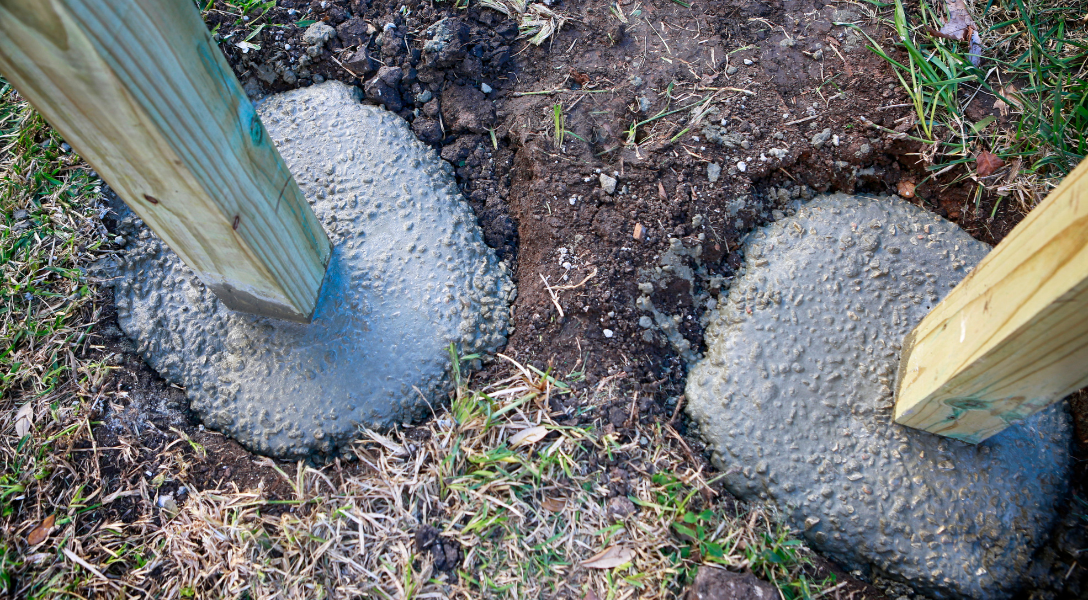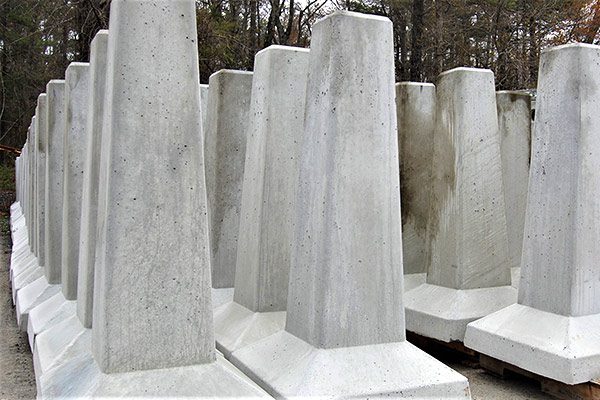Expert Tips for Putting Up Deck Footings to Assistance Your Outdoor Room
When it involves constructing a deck, one of one of the most essential elements to take into consideration is the setup of proper grounds. These footings are the structure whereupon your exterior room will relax, offering security and assistance for years ahead. Yet what specifically does it require to install deck footings properly? In this conversation, we will certainly discover expert tips and techniques that can help guarantee a successful and durable deck setup. From choosing the best type of footings to staying clear of common blunders, we will certainly supply you with the understanding and insights you need to confidently get started on your deck-building trip. So, allow's dive right in and find the key to a solid and long-lasting outside space.
Relevance of Proper Deck Footings
Correct deck footings are necessary for ensuring the stability and long life of your exterior space. Without strong and appropriately mounted footings, your deck may end up being unpredictable, leading to safety dangers and expensive repairs.

In addition to stability, proper deck footings likewise add to the long life of your exterior room (Deck Footings). Grounds that are designed and constructed to stand up to the elements and soil conditions in your area will help avoid the deck from moving or resolving gradually. By guaranteeing the footings are appropriately sized and mounted, you can decrease the threat of damages to the deck framework, prolonging its life expectancy and minimizing the requirement for expensive repair work or replacements

Picking the Right Type of Footings
When choosing the proper sort of grounds for your deck, it is necessary to think about aspects such as dirt problems, regional building regulations, and the total layout of your exterior room. The sort of footing you choose will play a vital duty in making certain the security and long life of your deck.
One typical sort of ground is the concrete footing. Concrete footings appropriate for a lot of dirt problems and give excellent support for decks. They are usually mounted listed below the frost line to protect against shifting and working out because of freezing and thawing cycles. One more choice is helical piers, which are suitable for locations with unpredictable dirt or high water tables. These piers are screwed into the ground and supply solid assistance for the deck.
In some instances, you may require to utilize specialized footings, such as heap footings or deep foundations, if you are building a large or multi-level deck. These grounds are made to disperse the weight of the deck over a larger area, ensuring security and stopping clearing up or sinking.
Before picking a kind of footing, it is vital to speak with local structure codes and regulations to make sure compliance. Additionally, take into consideration the layout and meant use of your exterior area. Factors such as the dimension, shape, and load-bearing needs of your deck will certainly influence the sort of footing that is most appropriate.
Preparing the Ground for Footing Installation
To appropriately prepare the ground for footing installation, it is essential to analyze the soil conditions and take essential actions to guarantee security and longevity of the deck. The first step is to dig deep into the location where the grounds will be installed.
As soon as the location has actually been excavated, the next step is to small the dirt. This can be done making use of a plate compactor or by utilizing a hand tamper. Compacting the soil assists to get rid of any kind of voids or air pockets, which can cause resolving and instability with time.
After compacting the soil, it is essential to lay a layer of gravel or crushed stone at the end of the excavation. This will offer water drainage and help to stop water from merging around the footings, which can cause disintegration and instability.
Step-by-Step Guide to Setting Up Deck Footings
After appropriately preparing the ground for footing setup, the following action is to begin the procedure of setting up deck footings. This detailed guide will offer you with a clear understanding of just how to mount deck grounds for your outside area.
Figure out the place: Begin by marking the positions of the deck grounds utilizing stakes and string. Guarantee that the locations straighten with the layout and design of your deck.
Dig the holes: Use a post opening digger or an auger to dig the holes for the grounds. The depth and diameter of the openings ought to be in conformity with neighborhood building regulations and the specific needs of your deck style.
Level the openings: Utilize a level to make certain that the holes are dug to the proper deepness and are level with each various other. (Deck Footings)
Add crushed rock: Location a layer of gravel at the base of each hole to boost drain and Continued avoid the wood from deteriorating.
Place the grounds: Put the grounds into the openings, seeing to it they are degree and plumb. Utilize a degree and a determining tape to ensure accuracy.
Safeguard the footings: Put concrete into the openings around the footings, filling them to the top. Make use of a post degree to make sure the grounds remain level as the concrete sets.
Enable time for curing: Allow the concrete cure according to the maker's instructions prior to continuing with the deck building.
Usual Mistakes to Prevent Throughout Footing Installation
One crucial facet to consider during the installment of deck footings is staying clear of common errors that can endanger the security and longevity of your outdoor room. While deck grounds might look like a straightforward and easy part of the building and construction procedure, overlooking certain aspects can cause pricey repairs and potential click this safety risks down the line.

Furthermore, overlooking to install proper water drainage actions can trigger water to build up around the grounds, leading to rot, degeneration, and the ultimate weakening of the deck's foundation. Utilizing the wrong kind of footing product or failing to adequately safeguard the footings can endanger their architectural integrity.
To stay clear of these errors, it is important to seek advice from with an expert or follow sector guidelines to make certain appropriate ground setup. By doing so, you can ensure the security and long life of your exterior space, giving a risk-free and click over here now enjoyable atmosphere for years to find.
Verdict
In final thought, mounting proper deck grounds is crucial for the stability and long life of your outdoor area. By picking the best sort of grounds and properly preparing the ground, you can make certain a solid foundation for your deck. Complying with a detailed guide and preventing usual blunders during footing setup will certainly better enhance the toughness and safety and security of your deck.
Proper deck footings are crucial for ensuring the security and durability of your outside room. The grounds offer as a link in between the deck and the ground, allowing the weight of the deck and its passengers to be distributed equally right into the dirt.One usual kind of ground is the concrete ground. Put the grounds: Position the grounds right into the openings, making certain they are level and plumb. Protect the footings: Pour concrete into the holes around the footings, loading them to the top.